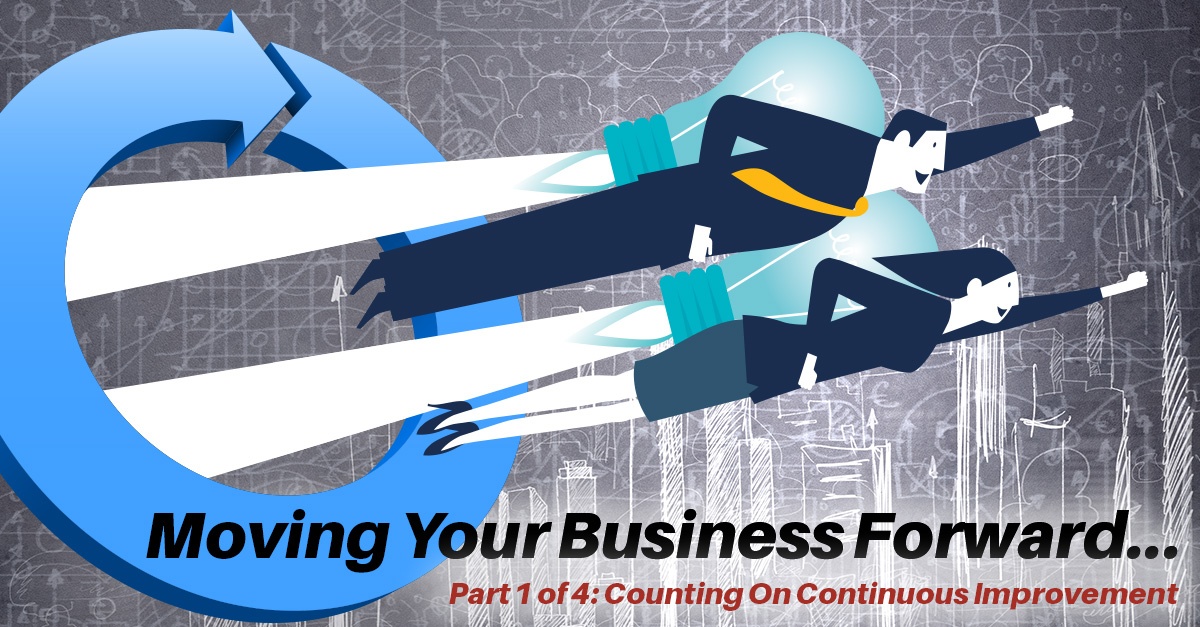5 Business Planning Tips To Boost Distribution Innovation
Innovation in business planning is the key to success for distributors. Most companies will say they are innovative, but in fact they are not.

No matter what industry your in, chances are you're seeing many more articles, presentations and speakers discussing the idea of Continuous Improvement. This Business Management and Operations concept is not just the latest buzzword - it a philosophy that dates back to the early 1950s. Defined in Wikipedia as “an ongoing effort to improve products, services, or processes,” Continuous Improvement really gets to the heart of what is required to thrive in today’s competitive business environment.
Frankly, if you’re not consistently evaluating the way your business operates, and surveying the technology landscape for new tools to improve processes and procedures, you may find yourself Amazoned or Ubered right out of business.
Let’s be clear. Continuous Improvement is not simply change for the sake of change, or an opportunity to adopt the latest shiny technology. Successful Continuous Improvement efforts need to be focused on identifying new ways to incrementally enhance and streamline operations, as well as ways to eliminate waste and the need for redundancy.
The process of Continuous Improvement should create value for a company by identifying and implementing new ways to increase productivity, streamline operational bottlenecks, and ultimately, increase margin.
Today, one of the most powerful technologies enabling continuous improvement and fueling business innovation in companies of all sizes is cloud computing - specifically software-as-a-Service (SaaS) business applications such as NetSuite, Adaptive Insights, BlackLine and Kyriba.
Adopting new SaaS technologies and implementing process change can be difficult for an organization. How you introduce and manage change is an essential ingredient for success. Employees are more likely to react positively to change if the philosophy of Continuous Improvement is closely tied to your company mission statement and/or yearly goal setting. Additionally, expanding on the benefit to employees that these changes bring about - and highlighting how their jobs will be easier, faster, more efficient - is always a welcome conversation.
The most obvious payoffs to optimization? Cost and time savings. But if done right, continuous improvement projects can also help boost morale and motivation because employees can make real contributions to positively impact their work. They will also have a much better sense of ownership regarding improving work processes.
Over time, employees will embrace change as a positive and will be much more accepting of new ideas. When you have vision alignment between company leadership and employees, it facilitates managed change so your company can innovate now and in the future.
We’re kicking off a series of blog posts about how SaaS business applications like NetSuite and Adaptive Insights are helping fuel continuous improvement. Explore with BSP the myriad ways to incrementally maximize the value generated from SaaS to fuel continuous improvement and business success.
Innovation in business planning is the key to success for distributors. Most companies will say they are innovative, but in fact they are not.

In times of economic uncertainty, it's imperative to be able to Plan, Report, and Analyze for multiple what-if scenarios and in one comprehensive...
A cloud CRM system can help e-commerce distributors leverage data to develop a competitive pricing strategy and maximize profits.